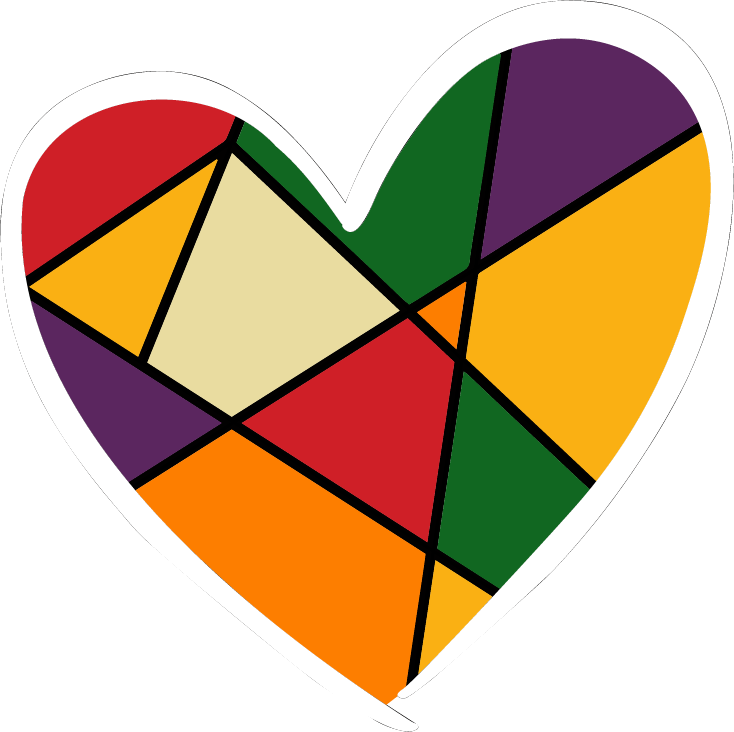
One People in Many Places
In 2024, four United Methodist congregations—Union Church in the South End, Old West Church in the West End, Community Church in Brighton, and Glendale Church in Everett—merged to form the Union Combined Parish. With hundreds of members, four church buildings, and three affordable living residences, we are creating a new sense of home where everyone has a seat at the table. With faith, imagination, and a bit of ingenuity, God is creating something new in Boston. Learn more about each legacy congregation below.

Union United Methodist Church in Boston's South End
Union United Methodist Church’s story begins in 1796 when a group of African-American believers began meeting for study and worship on Beacon Hill. As the faith community grew they requested their first pastor, the Rev. Samuel Snowden—a former slave turned abolitionist—and formed the May Street Meeting House. David Walker, who published the influential “Appeal to the Colored Citizens of the World,” was a member of this congregation. They soon outgrew this space and built a larger church that was a station along the Underground Railroad. With the migration of Boston’s black population, the congregation moved from Beacon Hill to Roxbury and then to its current home on Columbus Avenue in Boston’s South End—and taking the name “Union.” Educator and activist Dr. Mary McLeod Bethune, aunt to our pastor, was the keynote speaker for the formal opening on May 8, 1949. Throughout the decades Union has hosted the NAACP convention (1950) that voted to pursue Brown v. Board and the Duke Ellington Sacred Jazz Orchestra (1966). In the 1970s, Union led the development of Meth-Union Manor, a four-building affordable housing cooperative in the South End. During the 1980s and 1990s we fought against apartheid in South Africa and for economic equality for all at home. In 2000, Union voted officially to become what it had been for decades: a safe space for LGBTQ persons.

Old West Church in Boston's West End
Old West Church is the sixth home of the first congregation of the New England Conference of The United Methodist Church. This congregation was originally situated in Boston’s North End and known as “Methodist Alley.” Later it became the “First Methodist Church in Boston.” A Registered National Historic Landmark, The West Church was built in 1806 by Congregationalists in the Federalist “meeting house” style of architecture. Once a safehouse on the Underground Railroad prior to the Civil War, our church is one of two post-colonial era buildings that survived the destruction of the West End during the “urban renewal” of the 1950s. Occupying higher ground than The North Church, the original 1737 building was destroyed in 1776 by the British during the Siege of Boston. From 1896 - 1960, the church served as the West End Branch of the Boston Public Library. It was purchased by the Methodists from the City of Boston in 1962, and became home to our justice-seeking congregation. Old West Church is also home to a world renowned Charles Fisk organ, Opus 55. Dedicated on Easter Sunday of 1971, this three-manual organ with a mahogany case is a magnificent teaching, recital, and worship instrument. The Old West Organ Society cares for this treasured pipe organ and presents public concerts throughout the year. Consistent with core commitment to food justice, in 2014, the congregation boldly converted the church yard into a Food Forest and Pollinator Garden. After years of planning and fundraising, they expanded to the current layout in 2021: Hundreds of perennial plants (including herbs, tomatoes, melons, and garlic), two cherry trees, a plum tree, and two Roxbury Russets (the oldest cultivated apple breed in the U.S.) shape this gorgeous park and community gathering space.

Community United Methodist Church in Boston's Brighton
Community United Methodist Church faithfully served the Boston neighborhoods of Brighton and Allston for 150 years. Formed in 1977 from the merger of Allston Methodist (1872) and Oak Square Methodist (1912), Community UMC was an expression of the tide of mergers in Boston Methodism since 1792. Part of the legacy of Community UMC includes housing justice. In 1969, five Allston-Brighton congregations of different faiths came together to build an affordable housing project as a response to the “urban renewal” movement of the decade. What was built became known as the Charlesview Apartments, a 213-unit complex that was home to hundreds for over 40 years. In 2013, after a land-swap deal with Harvard University, in collaboration with the Community builders, and by the continued cooperation of the three remaining congregations (Community UMC included), a new 340-unit complex named the Charlesview Residences was built at 123 Antwerp Street on the Allston-Brighton line, providing more affordable housing and mixed-use space for the neighborhood.

Glendale United Methodist Church in the City of Everett
The Glendale Methodist Church at Ferry and Walnut Streets was organized on February 11, 1898 with 73 members. At the height of its ministry in the mid-20th century, there were over 700 members enrolled during the pastorate of Rev. Franklin P. Frye. Following a couple of fires at their church building, Pastor Arthur A. Pitman and the congregation built the current Glendale church building, which was dedicated on March 1, 1925. Twenty-five years later a stained glass window was installed over the main entrance in his memory. The congregation was the church home for a few generations of immigrant Newfoundlanders who had settled in the gateway city of Everett, Massachusetts. Church membership declined as children moved away for school and work and the community of Everett continued to evolved with new immigrant arrivals. In its waning year, Glendale UMC was known in the community for its large flea markets and bi-annual hymn sings in the sanctuary with its Hook Pipe Organ.
